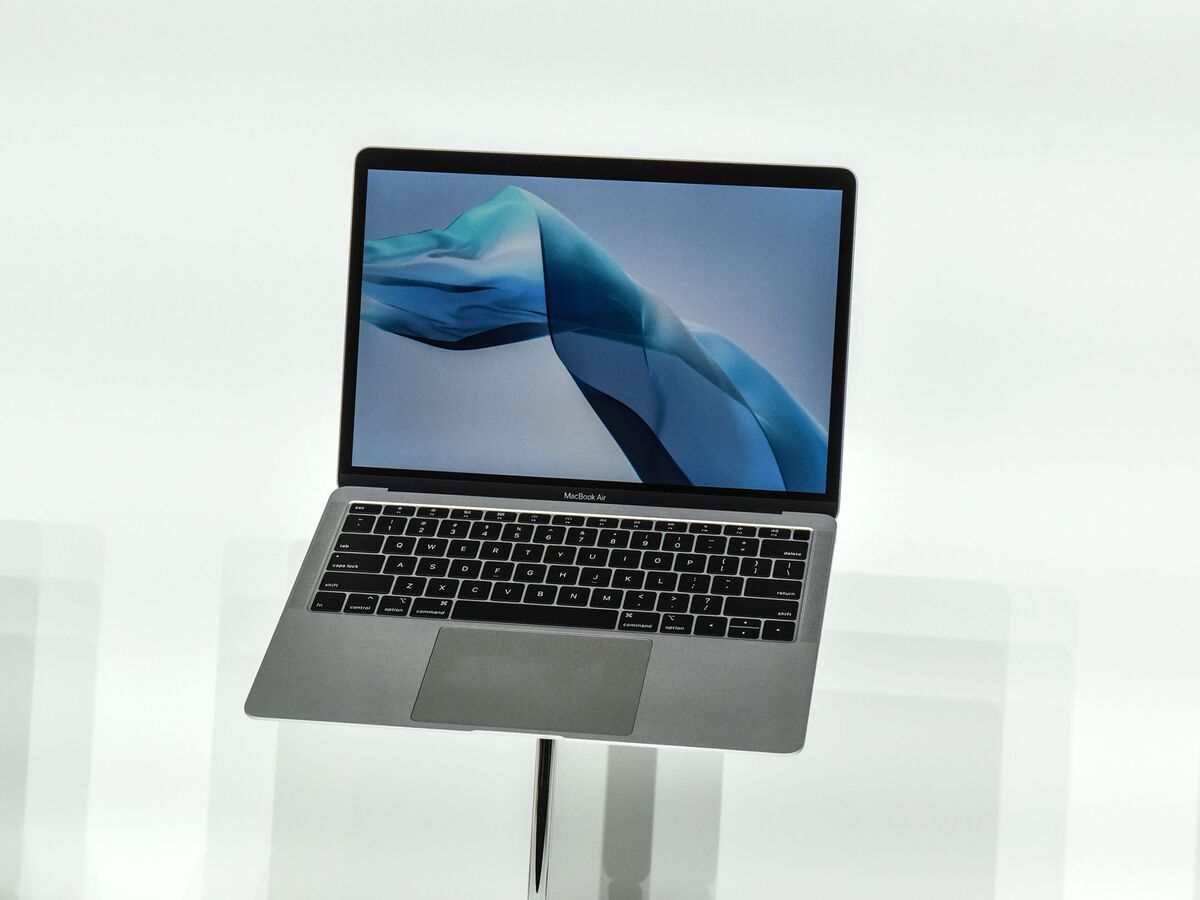
The current design of Apple’s MacBook Air.
Photographer: Stephanie Keith / Getty Images North America
Photographer: Stephanie Keith / Getty Images North America
Apple Inc. is working on a thinner and lighter version of the MacBook Air, the company’s mass-market laptop, according to people familiar with the matter.
The new computer is planned to be launched during the second half of this year or in 2022. It will include Apple’s MagSafe charging technology and a next generation version of the company’s internal Mac processors. Apple discussed how to make the laptop smaller by shrinking the border around the screen, which will remain at 13 inches. The current model weighs 2.8 pounds and is just over half an inch at its thickest point.
The company has considered building a larger version of the MacBook Air with a 15-inch screen, but Apple is not moving forward with that for the next generation, people said, who asked to remain anonymous discussing private matters. An Apple spokeswoman declined to comment.
MagSafe, which was removed from the MacBook Air with its 2018 redesign, is a magnetic charging system. This means that any accidental pulling on the power cord would simply disconnect it from the laptop instead of pulling the entire computer. The new model will have a pair of USB 4 ports for connecting external devices.
The new laptop is destined to be a cutting-edge version of the current MacBook Air, which is expected to remain in the company’s lineup as an entry-level offering. Apple last updated the product in November with its own Mac M1 chip, replacing an Intel Corp. processor.
The Mac is Apple’s oldest product line and has a loyal following. A few years ago, the company was criticized for not updating these computers enough and not paying attention to customer demands. Now, there is a flood of updates coming. In addition to the new MacBook Air, Apple is planning its biggest MacBook Pro update since 2016, the first redesign of the iMac in nearly a decade, a new Intel-based Mac Pro and a half-size Mac Pro desktop with internal chips.
The future MacBook Pro is an example of Apple’s renewed focus on Mac followers. The company is planning to bring back an SD card slot for the next MacBook Pros so that users can insert memory cards from digital cameras. This feature was removed in 2016, to the dismay of professional photographers and video creators, key segments of the MacBook Pro user base. The much-criticized Touch Bar, the touchscreen function line of the current model, is also going.
Apple has also developed basic Mac support for cellular connectivity – the ability of Macs to connect to the Internet via smartphone networks – and Face ID, the company’s face recognition system. But none of the features appear to be available anytime soon. To that end, Face ID was originally planned to arrive in this year’s iMac redesign, but is now unlikely to be included in the first iteration of the new design.
